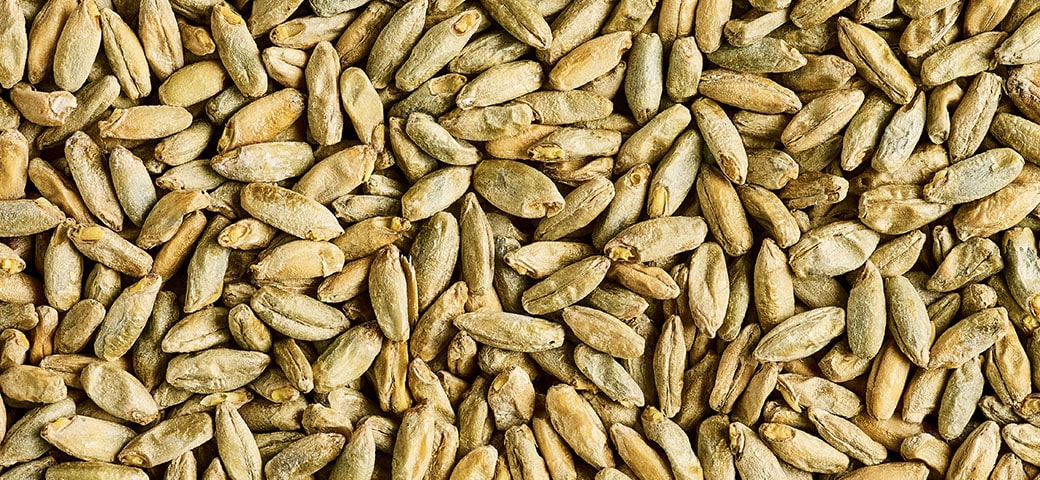- Rye Malt Guide – How to Use This Malt for Distinctive Homebrews - November 24, 2022
- Aromatic Malt Guide – Why I Use This Malt in My Homebrew Recipes - November 19, 2022
- Willamette Hops Guide – Why I’m a Fan of This Classic American Hop - November 9, 2022
Nothing quite compares to using Rye malt in your homebrew recipe.
This malt variety has a distinctive flavor and taste that you can’t replicate with another malt, and it works well in many different types of beer. However, there are potential pitfalls when homebrewing with Rye and many people find it highly challenging to work with.
My Rye malt guide is going to help you understand why I like using this malt, how you can brew successfully with Rye, and also the reasons I don’t think another variety can replace this malt.
Bottom Line Up Front
Rye malt will provide a unique spicy finish to your homebrewed beers. While it isn’t the easiest malt to brew with, I think its distinctive flavor and taste bring a lot to the table. As long as you tweak your brewing process slightly, you can make some fabulous pale ales, lagers, porters, and IPAs with Rye malt.
Pros and Cons of Rye Malt

Pros
- Rye malt produces a unique finish to beers that you can replicate with an alternative.
- This malt offers a distinctive spicy flavor and can add a full, rich taste to your homebrews.
- You can make many different types of beer with Rye malt, including IPAs, pale ales, lagers, and porters.
Cons
- Rye malt is difficult to brew with, and it is easy to spoil a homebrew with this malt.
- Using more than 20% of Rye malt in a homebrew recipe can produce a less-than-ideal taste.
Flavor Profile
The prominent flavor I pick up with any Rye malt is a spiciness that I think is unique. I haven’t found another malt that can replicate the distinctive spicy notes of using Rye, and I think this makes it such an exciting homebrew ingredient.
In many ways, Rye reminds me of several past wheat beers I have tried. Rye malt has a lightish color (3.7º Lovibond), and I have found a reddish, almost amber hint in the homebrews I have made with this variety.
I also find a grainy finish to the beers I have made with Rye malt, alongside a unique sharpness that I think comes from its spicy flavor. This suits some types of beer, and I will detail the beers I think work great with Rye malt later.

How to Brew with Rye Malt
Rye is one of the harder ingredients to use in a homebrew recipe.
I have had a few disasters over the years when using Rye; however, once you get used to its uniqueness and learn how to use it properly, you will have the edge over many homebrewers.
There are several issues when brewing beers with Rye.
Firstly, many inexperienced brewers use too much. As Rye has a strong taste, I think using this malt in lesser amounts is better. I usually aim for a recipe that has up to 20% Rye malt. For me, this provides a nice balance, and I’ve found the taste to become overpowering at higher quantities.
Another problem when using Rye is the potential issues when brewing with this ingredient. Rye malt is highly absorbent (due to its thinness compared to other grains), and many people suffer a stuck mash when using Rye malt. A stuck mash is when the worst doesn’t filter properly, ending up in a slow run-off, which can ruin your homebrew.
Some tips I have found useful when brewing with Rye malt include:
- Use a little bit of extra water in your mash to help it filter.
- Increase your mash temperature by 1 or 2 degrees, and this will help prevent a slow run-off.
- Only use small amounts of Rye initially until you get used to working with this malt.
Also, I recommend that you use rice or barley hulls to cover the lauter tun. I learned this after a few unsuccessful efforts in homebrewing with Rye malt, and the result was sparging issues that massively complicated the process.
Finally, I found that if I added Rye malt after I had mashed in the other malts that I was using in my recipe helped to prevent the mash from getting stuck.
Storing Rye Malt
Even though brewing with Rye malt requires some extra thought and making small changes to your process, storing Rye malt isn’t any different than other malt varieties.
So, to store Rye malt successfully, make sure you:
- Store it at room temperature under 59°F (15°C).
- Don’t keep it directly on the ground; instead, keep it in a well-sealed container off the floor.
- Make sure it is in a low-humidity environment that is free from dampness.

What Kind of Beers Can You Make from Rye Malt?
Even though I have had difficulties making homebrews with Rye malt, I have got a lot better with experience. This has led me to create some lovely tasting beers with Rye, and I think these four beer types suit this malt variety.
Pale ale
Rye malt works great in a pale ale recipe, and it is one of my favorite types of beer to make with this malt variety.
One of the best pale ales I have made with Rye malt used Centennial hops for bittering alongside a pale malt to further enhance the overall flavor. I think the spicy notes of Rye malt really work in pale ale homebrew, but remember to keep the Rye percentage under 20% or you risk spoiling the flavor.

IPA
When I am brewing an IPA, I enjoy a heavy citrus flavor. So, one of the reasons I like using Rye malt in an IPA is to balance out the fruity and citrus notes and create a more well-balanced brew.
I find many modern IPAs to be intensely bitter; however, I like to offset this a bit and bring in the spicy and malty flavors of Rye.
Some hops I have found to work well in an IPA recipe alongside Rye malt include Chinook, Citra, Columbus, and Amarillo. These hops all bring a solid flavor for an IPA recipe, while the Rye malt will just add a grainy finish.

Porter
Porters are among my top homebrews to make, and Rye malt is a good choice if you want a delicious porter to enjoy all year round.
For me, Rye adds a lovely kick to an otherwise smoother porter recipe.
It would be best if you combined Rye malt with a darker crystal malt when making a porter. I like creating a toasty flavor with other malts and then bringing in the spicy finish of Rye, as I think this creates a really interesting porter recipe.

Lager
Rye malt can also be used to make a nice-tasting homebrew lager.
I have only limited experience with using Rye malt in a proper lager recipe. However, on the few occasions that I have used this malt to create a lager, I have been pretty impressed with the results.
The best lager recipe I made from Rye malt contained Vienna malts, and it turned out as a pilsner-style brew. Again, I recommend using less than 20% of Rye malt in your lager recipe, but it had a lovely rich, malty finish with that distinctive spicy edge that Rye is known for.

Malt Analysis
| Color | 3.7º |
| Moisture content | 4.5% |
| Extract (DBFG) | 80.0% |
| Diastatic Power | 105 |
| Total Protein | 10% |
| Usage | Up to 20% |
Alternatives to Rye Malt
The thing about Rye malt is that it creates such a unique taste, and I don’t think it is something that you can replicate with another malt. I think that Rye is in a league of its own with its assertive spicy flavor and grainy finish, so there are no credible alternatives that will create the same taste.
Frequently Asked Questions
Question: What is Rye malt used for?
Answer: Rye malt is used in many homebrew recipes, particularly with pale ales, IPAs, porters, and lager, as it offers a spicy finish. Rye malt is also used extensively for whisky and gin.
Question: What does Rye malt taste like?
Answer: Rye malt provides a distinctively spicy flavor that I don’t think you can replicate with another malt variety. Rye malt also offers a full and rich finish to beers with an amber color.
Question: How much Rye malt should I use?
Answer: I think it is best to use Rye malt sparingly. You should look for a recipe that uses up to 20% Rye malt. Although this depends on how much you want the flavors to come through. At higher amounts, I think Rye malt can overpower and spoil beer.
Question: Is Rye malt difficult to use?
Answer: Yes. Even though Rye malt has many positives, it is one of the more complex malts to brew with. Not only can you spoil beer by using too much Rye, but it can complicate the brewing process, and you need to take extra steps to ensure a successful brew.
Question: What malts are similar to Rye malt?
Answer: I think Rye malt is unique, and I have yet to find another variety that can offer the same flavor and finish. I think Rye malt has no direct alternative because it has its own distinctive characteristics that are difficult to replicate.
Question: How long can you keep Rye malt?
Answer: You can keep Rye malt and still get the same flavor and finish for about a year. Make sure that you store it in air-tight containers at room temperature under 59°F (15°C) and in an environment free from dampness.
Conclusion: Brewing with Rye Malt Isn’t Easy, but It Is Worth a Try
When I first started making some homebrews with Rye malt, I ran into many issues.
Rye malt is challenging to make a successful homebrew. Using too much can seriously spoil your beer, so you need to take extra care and tweak the brewing process to avoid any issues. However, there is something unique and distinctive that I love about Rye malt.
Its prominent spicy flavors can’t be matched with any other malt variety, so you can create some exciting beers. Once I got the hang of using Rye, I created delicious IPAs, pale ales, porters, and even lagers that have an exceptional finish.
Be careful when you use Rye malt because it takes time to get used to, but I think it is worth exploring for every homebrewer.

